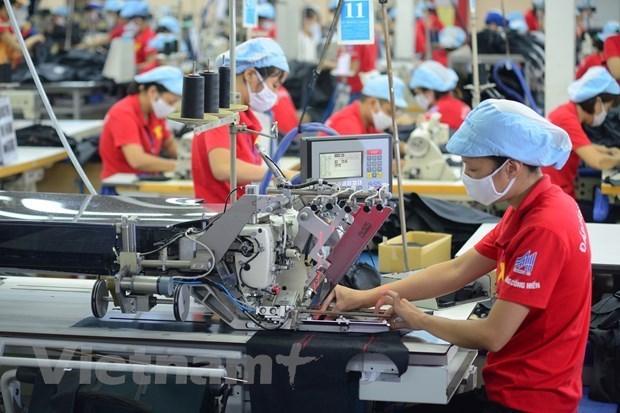ADB upgrades Vietnam’s growth forecast this year to 7.5%
The Asian Development Bank (ADB) said while Vietnam’s economy is performing well amid uncertainties in the global economy, risks to the economic outlook have become elevated.
 A garment factory in Vietnam (Photo: VietnamPlus)
A garment factory in Vietnam (Photo: VietnamPlus)It also revised the inflation prediction for this year down to 3.5%.
The bank said while Vietnam’s economy is performing well amid uncertainties in the global economy, risks to the economic outlook have become elevated.
A strong performance across sectors boosted Vietnam, whose economy expanded by 8.8% in the first three quarters of 2022. Economic activities rebounded following the removal of COVID-19 restrictions and the achievement of the nationwide vaccine coverage. International tourist arrivals reached 2.4 million in the period from January to October. With these developments, the growth forecast for 2022 is adjusted up to 7.5%.
While trade continues to expand, signs show weakening global demand for the country’s exports. The manufacturing Purchasing Managers’ Index (PMI) dipped from 50.6 in October to 47.4 in November, and employment was down for the first time in the months. Little liquidity is left for economic recovery after recent monetary tightening, a decline in corporate debt issuance from January to October, and a slowdown in disbursement of public investment. The growth forecast for 2023 is therefore adjusted down from 6.7% to 6.3% as major trade partners weaken, the ADO 2022 Supplement noted.
In the report, the ADB lowered growth forecasts for developing Asia and the Pacific amid a worsened global outlook, at 4.2% this year and 4.6% in 2023, which were respectively projected at 4.3% and 4.9% in the September ADO update.
Monetary policy tightening by central banks globally and in the region, the protracted Russia – Ukraine conflict, and anti-pandemic measures in China are slowing down developing Asia’s recovery from the COVID-19 pandemic. Restrictions under the “zero-COVID” approach, along with a struggling property market, have led to another downgrade of China’s growth outlook.
“Asia and the Pacific will continue to recover, but worsening global conditions mean that the region’s momentum is losing some steam as we head into the new year,” said ADB Chief Economist Albert Park. “Governments will need to work together more closely to overcome the lingering challenges of COVID-19, combat the effects of high food and energy prices – especially on the poor and vulnerable – and ensure a sustainable, inclusive economic recovery.”
The ADB lowered its forecast for inflation in developing Asia and the Pacific this year to 4.4% from 4.5%. However, the bank raised its projection for next year to 4.2% from 4.0%, due to lingering inflationary pressures from energy and food.
China’s economy is forecast to expand by 3.0% this year, compared with a previous projection of 3.3%. The forecast for next year was cut to 4.3% from 4.5%, due to the global slowdown. Gross domestic product growth projections for India were maintained at 7.0% this fiscal year and 7.2% next.
The ADB held that even with the downgraded forecasts, developing Asia will still do better than other regions globally, in terms of both growth and inflation.
The bank’s growth forecast for Southeast Asia this year was raised to 5.5% from 5.1%, amid robust consumption and tourism recovery in Malaysia, the Philippines, Thailand, and Vietnam. Projections for next year, however, were lowered to 4.7% from 5.0% due to weakening global demand.
The growth forecast for the Caucasus and Central Asia this year was upgraded to 4.8% from 3.9%, while the projection for the Pacific was raised to 5.3% from 4.7%, due to a strong tourism recovery in Fiji.
The ADO is published every April, with an update in September and brief supplements published normally in July and December. Developing Asia refers to the bank’s 46 developing members./.













